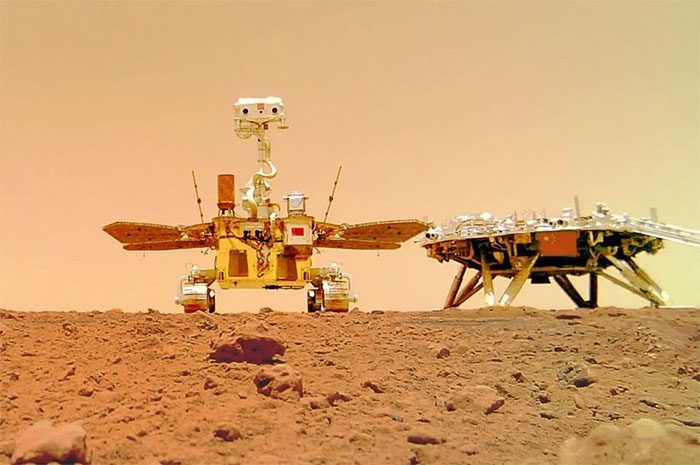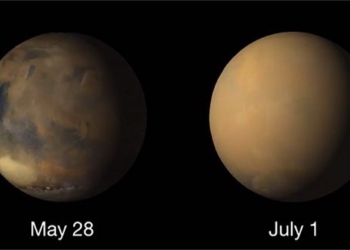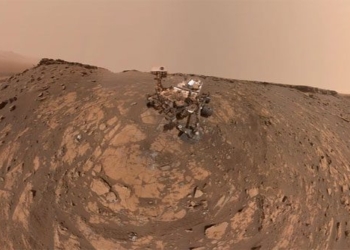China Likely to Outpace the U.S. in the Race to Retrieve Mars Samples as NASA Faces Challenges.
According to the South China Morning Post (SCMP), the cost of NASA’s Mars Sample Return program could exceed 10 billion USD, while China is likely to become the first nation to achieve this milestone.
This assessment follows a meeting held in Beijing, China, to update the progress of the mission to collect rocks from Mars and return them to Earth.

Zhurong – China’s first Mars exploration rover. (Photo: CNSA).
Sun Zezhou, the chief designer of the Tianwen-1 spacecraft, confirmed that China possesses all the essential technologies needed for the Tianwen-3 mission, and everything is progressing smoothly.
Notably, the Tianwen-1 spacecraft helped China become the second country, after the U.S., to successfully land on the Red Planet in 2021.
However, no country has yet successfully retrieved samples from Mars. In this context, both the U.S. and China are striving to be the “pioneers.”
From China’s perspective, Sun Zezhou indicated that the scientists involved in the project are ready. They have identified the two biggest challenges for the success of the Tianwen-3 mission.
The first step involves collecting rock samples and then launching from the surface of Mars. The subsequent step is to return the capsule containing the samples back to Earth.
“All stages require our spacecraft to be extremely intelligent at the system design level,” Zezhou stated.
According to this expert, China is increasingly likely to become the first country to successfully return samples from Mars, despite the U.S. having a longer history of Mars exploration.
This is because for the U.S., the situation seems more complex, with their Mars Sample Return mission (known as MSR) facing continuous delays. Furthermore, the total cost of the mission has significantly increased from the initial estimate of 4 billion USD and is likely to surpass 10 billion USD.
In February, the Jet Propulsion Laboratory in Pasadena, California—the agency responsible for the MSR mission—laid off 8% of its staff. Additionally, the entire scientific mission may face budget cuts from the U.S. Congress, particularly for the MSR project.
Despite the delays and uncertainties, scientists remain hopeful that the MSR program will succeed, as its sample collection sites are diverse and carefully selected for high scientific value.
The MSR is set to collect Mars rocks, with the NASA Perseverance rover currently gathering samples in the Jezero crater. These are expected to be returned to Earth around 2031.
Meanwhile, China’s Tianwen-3 mission may achieve its goals a year earlier, in 2030. In addition to Tianwen-3 and MSR, India and Europe are also preparing to launch missions to the Red Planet.
Specifically, the Mars Orbiter Mission 2 (India) and ExoMars Rosalind Franklin (Europe) are planned for launch in 2024 and 2028, although they are not designed for sample collection.





















































